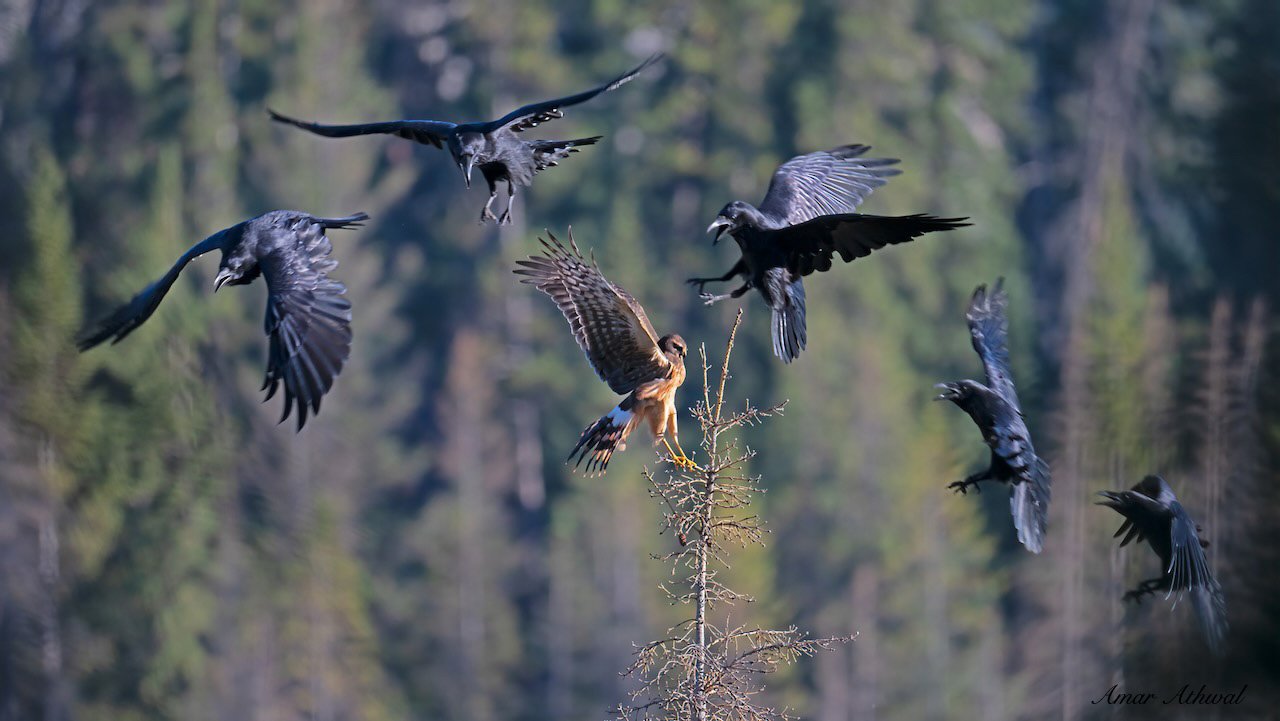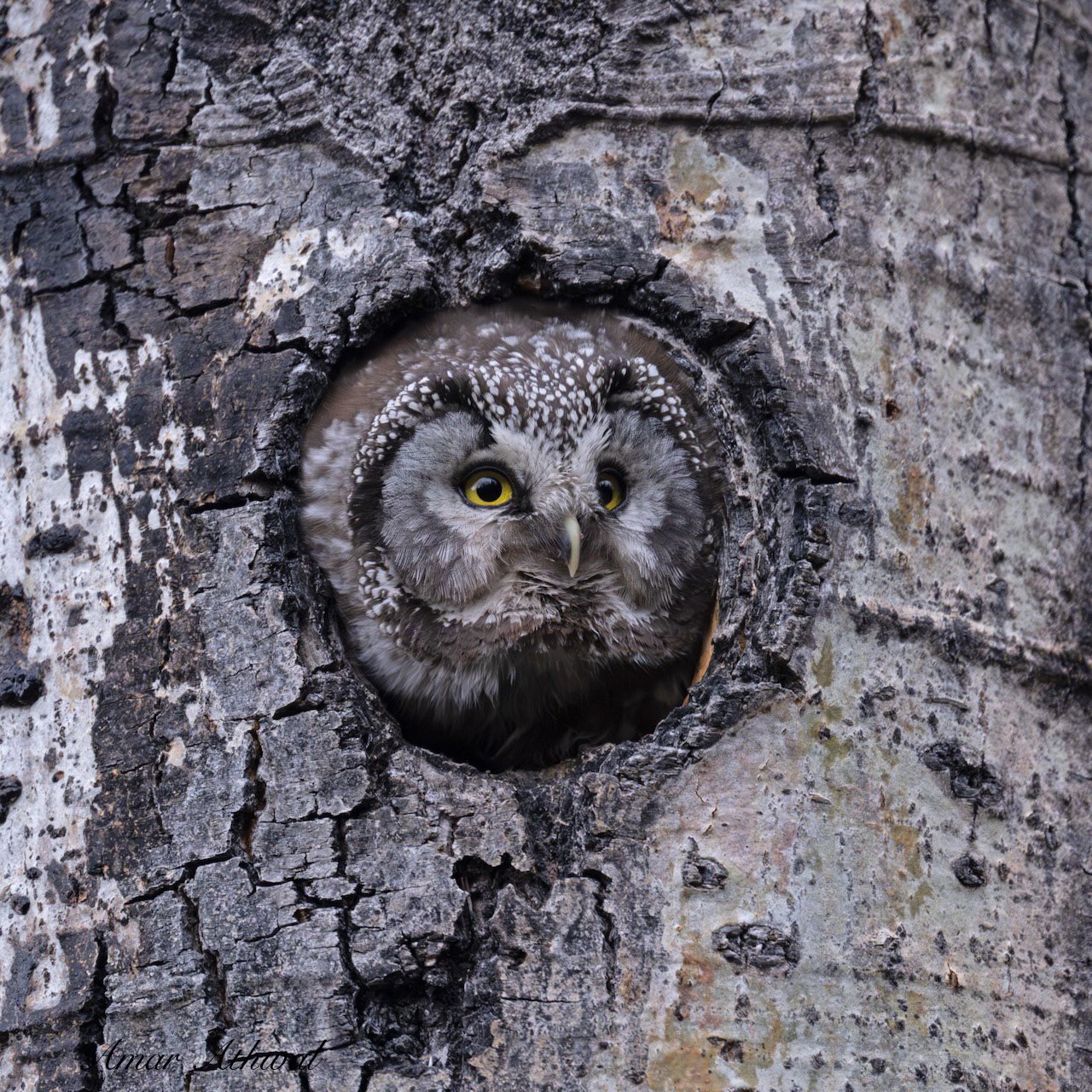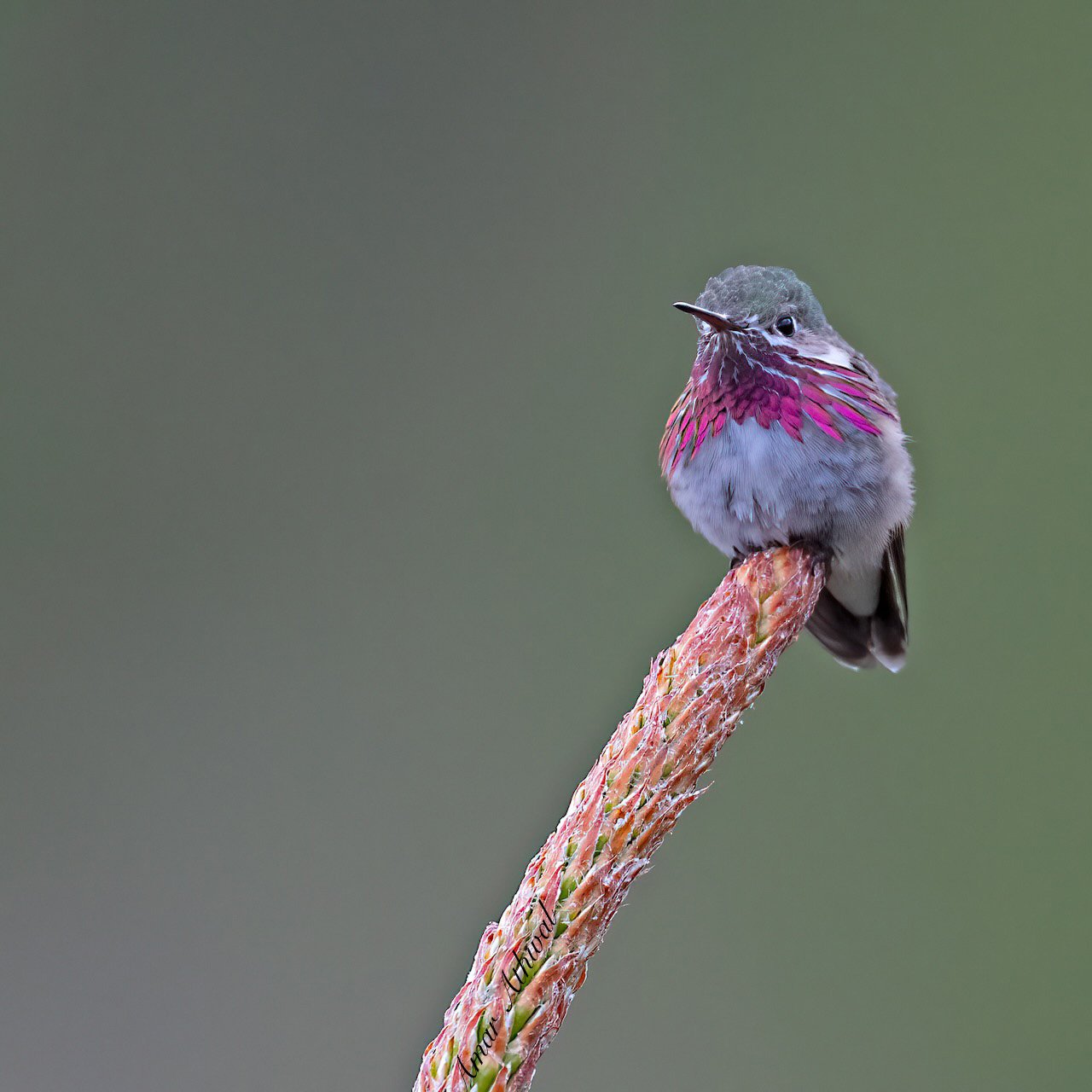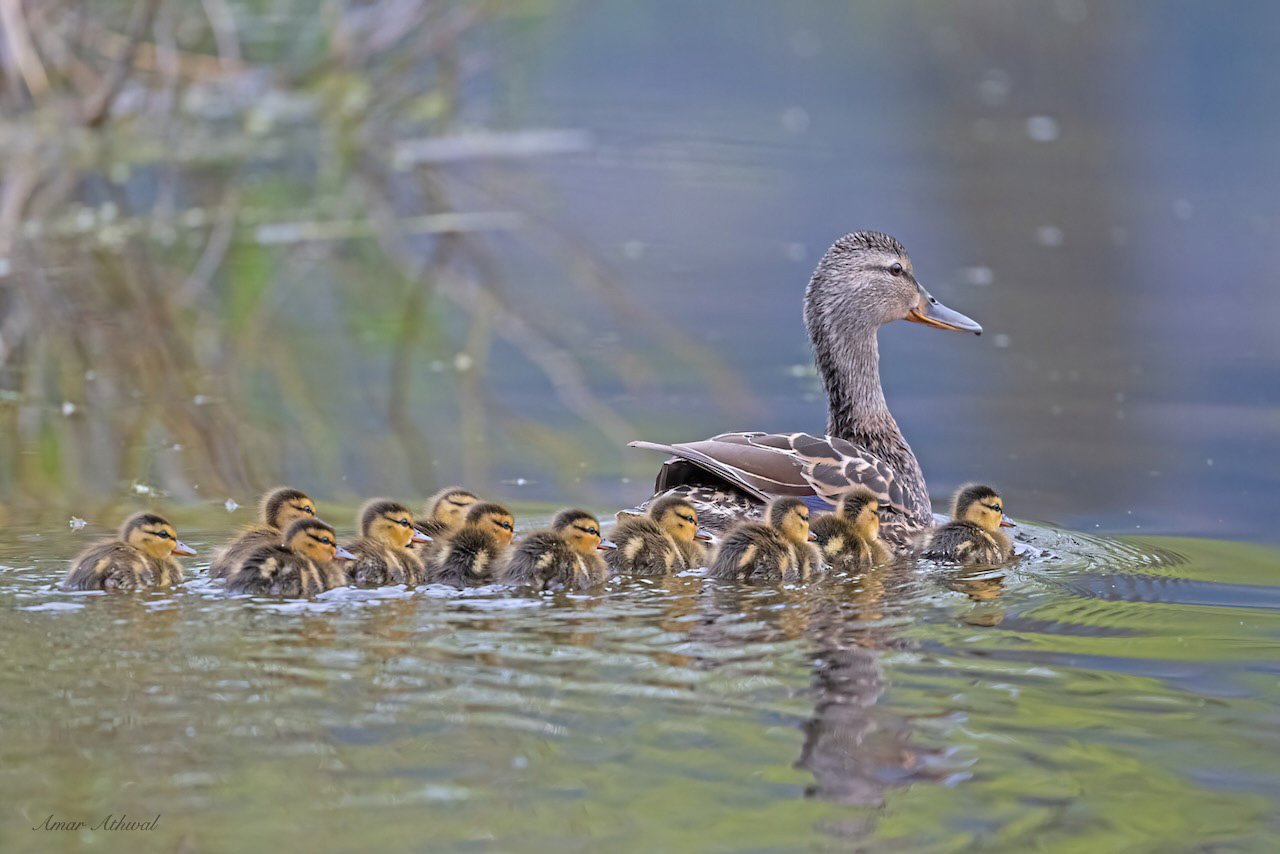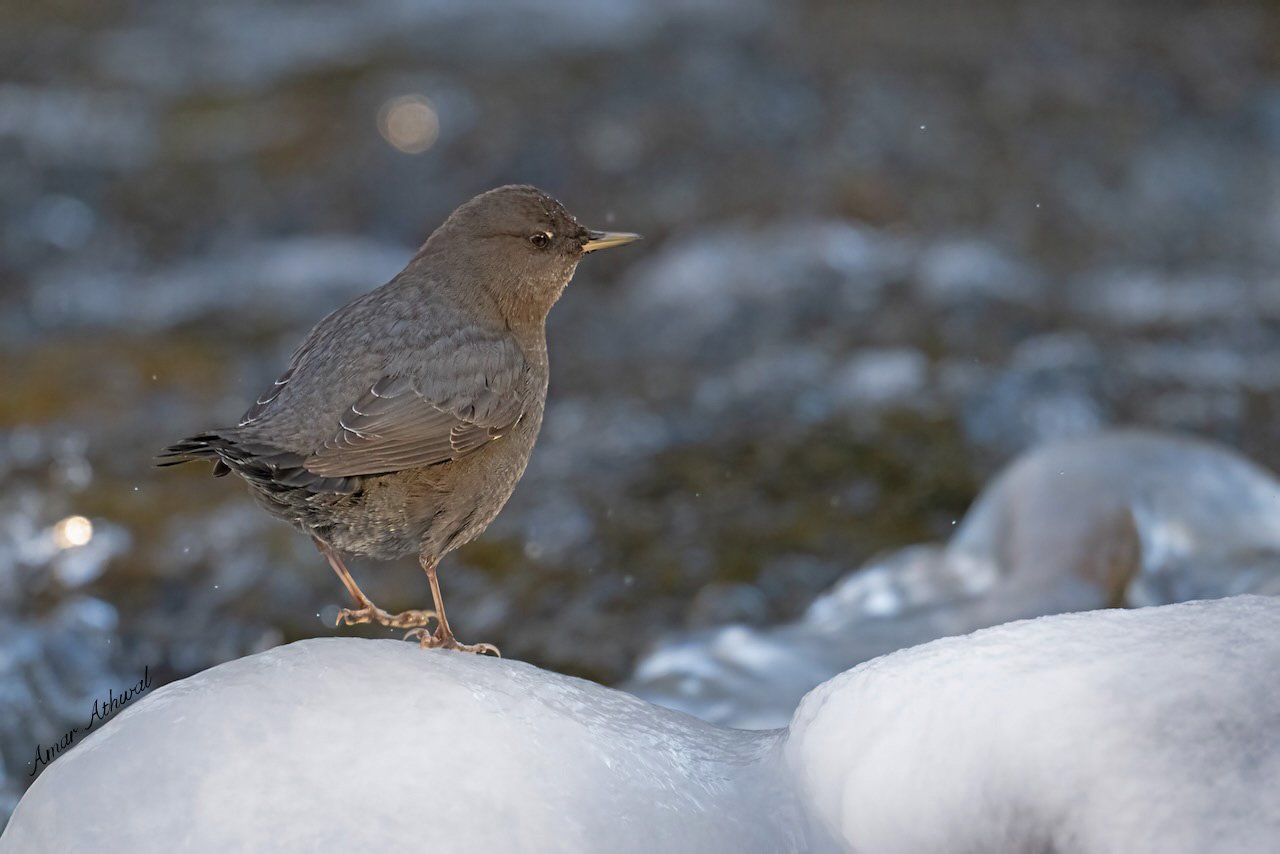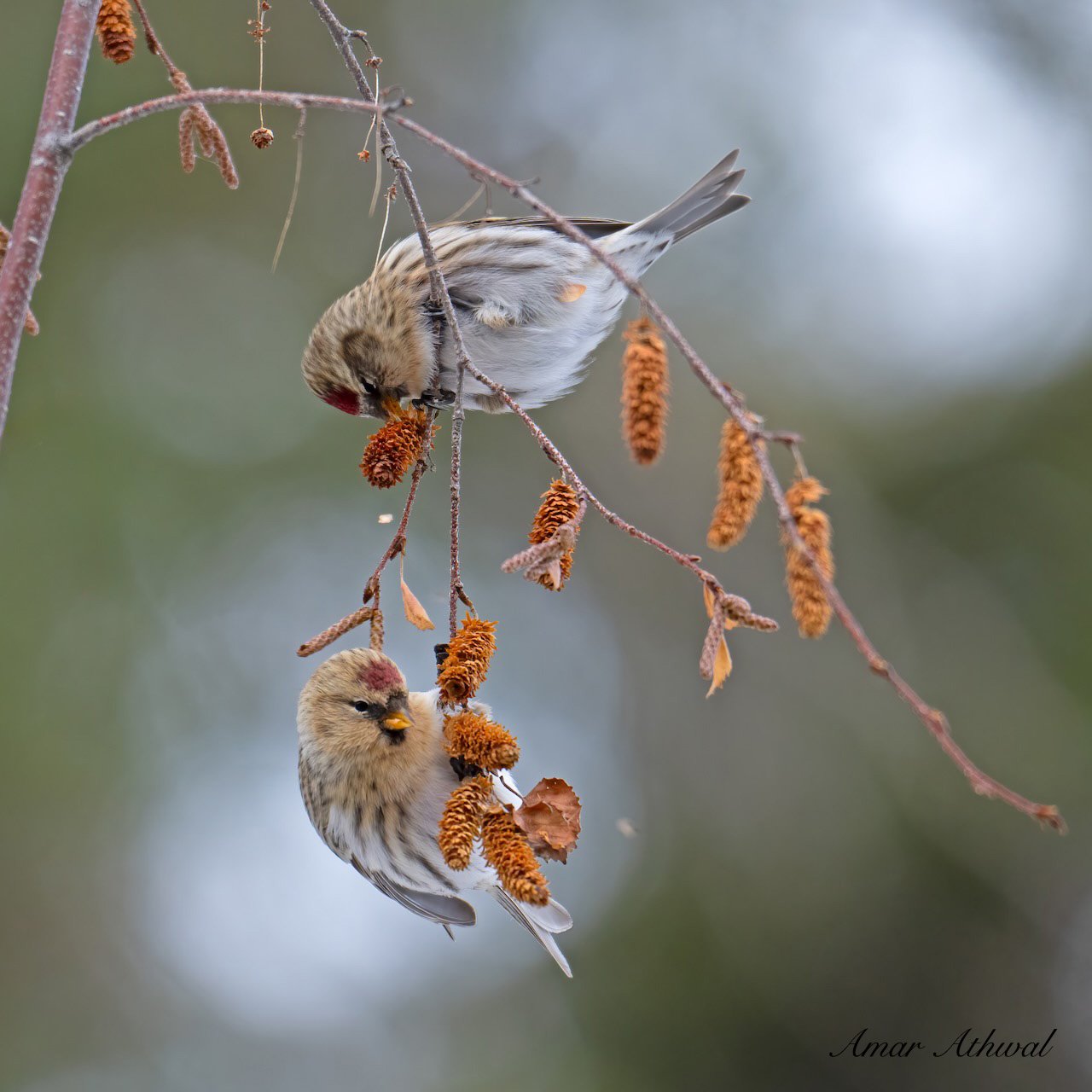Bohemian Waxwings tend to breed in open evergreen and mixed forests near lakes, ponds, or streams in northern North America and Eurasia. During the non-breeding season, they roam through open woodlands, urban areas, roadsides, and parks in search of any fruits they can find. During the breeding season, they eat insects and some fruits, but it's all fruits during the non-breeding season. They pick fruits from trees and shrubs, swallowing them whole. They eat just about any fruits they come across and consume dried fruits during the winter. Since these dried fruits have a high level of sugar, they regularly need to drink water or consume snow when it's not available, all to help with the digestion of the dried fruits. Here, they are consuming juniper berries.
White-tailed Ptarmigan
The White-tailed Ptarmigan in summer makes its home mostly in terrain above the tree line, at elevations that can exceed 4,000 meters. Their range extends from Alaska to New Mexico, with habitats that are mostly treeless at the higher elevations of their range. Vegetation, due to heavy winds, tends to be 36 cm high or less. Trees, if present, tend to be stunted and molded by the high winds. At the lower part of the ptarmigan's elevational range, spruce, subalpine fir, and white fir may be found in small clusters in alpine meadows.
White-tailed Ptarmigans often forage in small, narrow spaces or openings that have formed due to freezing and thawing on steep slopes, where small plants have enough moisture and shelter to grow. They can also be found near streams or at the edges of melting snowfields. When snowstorms begin in autumn, ptarmigans move downslope to more sheltered areas, where willow, alder, and birch grow around meadows with sedges and grasses. As the weather turns severe in winter, some ptarmigans move below the tree line into forests.
During the summer and early fall hiking season, I try to seek them out as I make my way up to, and explore, alpine meadows and higher slopes. During the winter months, at lower elevations where shrubs like willow poke above the deep snowpack. This year, due to below-normal snowpack, half of the height of the willow was above the snow. I came across four White-tailed Ptarmigans resting after their morning consumption of willow buds. They blend in nicely with their surroundings, but with some time and effort, they can be spotted. And on some occasions, when they are close enough, I'm able to get a few good pictures.
Common Redpoll
The Common Redpoll is one of the bird species that calls Banff National Park home during the winter. Winter is when most of us get to see them in Canada and in the central or southern United States, as they search for seeds. They breed in the northern latitudes, among scattered shrubs and trees such as willow, birch, or alder in areas of tundra. Common Redpolls primarily eat seeds in winter, particularly birch and alder seeds. The redpoll in the picture was feeding on seeds from birch catkins, along with several of its buddies. They will also probe for insects. This winter has not been particularly cold, but nonetheless, some redpolls will tunnel into the snow to stay warm during the cold nights. These tunnels are about 30 cm long and approximately 12 cm under the insulating snow.
Common Raven
Another Christmas Bird Count (CBC) is upon us. Led by the Bow Valley Naturalists, the CBC in the Bow Valley will take place on Saturday, December 14, 2024. I usually write about the CBC a week before it happens in the Bow Valley, but I think I mixed up my chocolate intake, and here we are. The Bow Valley Naturalists have been involved with the count since 1975, so tomorrow will be the 49th count. Much has changed in recent years, let alone when looking back to 1975. The CBC counts that occur across Canada have become even more important for observing what is going on with our feathered friends.
There’s an important Citizen Science component to the CBC, but it’s also a great way to be social and active as we listen and look to find what species of birds are around us. And there are always some surprises, even if we don’t come across a Common Raven with leucism. This raven was spotted about 56 km from where we will be counting.
Animals with albinism lack melanin, the natural pigment in skin, feathers, hair, and eyes. They tend to appear pale pink or red in color. Leucism, on the other hand, is a defect in pigment cells, which causes animals to have pale or muted colors, or, as in this raven's case, patches of white. If the raven was all white, one way to tell whether the bird has albinism or leucism is by looking at the eyes. With leucism, the raven would have dark-colored eyes, rather than red or pink. Leucism, like albinism, is inherited. The muted colors and patches on an animal’s skin or feathers can vary depending on the genetics of its parents.
So, whether you’re a beginner, an advanced birder, or somewhere in between, dress for the weather and bring a few snacks—chocolate is always a good choice. Enjoy another Christmas Bird Count. And even if you’re not participating in this event, which started in 1900, the next time you see a bird, give it a look for a few extra seconds or a minute and appreciate how amazing birds are.
Golden-crowned Kinglet
Times when the world seems out of control and you can’t make sense of it, nature is a great remedy. Add birding to your outing, and the mind begins to fit into nature’s rhythm. During late fall and winter, only a fraction of the species are encountered compared to spring and summer, requiring a greater effort to hear and spot them. This is even more challenging when most birds aren't calling out as they do during main birding season. That said, they still make other sounds, including this tiny songbird, the Yellow-crowned Kinglet. This was especially true when several of them were foraging for insects through the leaves. With their yellow crowns showing, they blended in perfectly among the half-dried leaves still clinging to the branches. Light rain fell as I tried to get a few good pictures while the kinglets kept moving, searching for food. In those moments, the world felt small and manageable again.
Northern Harrier and Common Raven
I wanted to talk about the birds, but I think you might be more interested in what is going on in the image and how I got this picture. Perhaps another time I can discuss the Northern Harrier, which has a face that is owl-like, allowing it to hear voles and mice underneath the vegetation. I would also have talked about how this long-tailed hawk glides over the marsh or grassland while hunting for its prey. How they primarily hunt small mammals and birds, but they are also capable of taking larger prey like rabbits and ducks. I guess I will talk about this beautiful bird another day.
I also wanted to discuss the Common Raven. While the harrier is found across North America, ravens are found throughout North America and around the world in the Northern Hemisphere. They have followed people for centuries, for a chance at a quick meal. I would have liked to talk about how they are one of the most intelligent birds. Young ravens enjoy playing, often dropping sticks and diving to catch them. And how they work together to distract adult incubating birds at seabird colonies while another raven grabs an egg or a chick. They have also learned that the sound of a gunshot may mean a carcass nearby, providing an opportunity for food. They are excellent flyers; one bird was even seen flying upside down for nearly a kilometer.
But for now let’s talk about how this picture came about. If you haven’t guessed by looking at the image, there is only one raven and one harrier represented. I was taking pictures of the harrier when the raven flew into the frame. Ravens never miss a chance to mob eagles, owls, and hawks. While I was photographing the harrier, this raven was perched on a nearby tree, calling out. Then it flew in from the back right, going over the hawk and out the front left. By using continuous shooting mode, I was able to capture several images of the raven’s flyby. To avoid overlapping of the raven, I chose five images of it and one of the harrier, then layered them together using an application. With the background having the same exposure, I digitally created one image from six.
Boreal Owl
At night, the Boreal Owl becomes active in the spruce and fir forests, hunting for small mammals and birds with its talons. If you're out there, you might hear its hooting sounds from late winter through spring. Boreal Owls spend the entire year in the boreal forest, only migrating south when food is scarce. Like other owl species, the female is larger than the male, but with Boreal Owls, the size difference is especially pronounced. Sometimes the female can be twice as heavy as the male. Additionally, Boreal Owls have asymmetrical ear openings, with one opening positioned higher than the other. This asymmetry helps the owl better determine the direction of sounds, which is crucial for hunting.
Boreal Owls tend to be solitary. Even during the breeding season, mated pairs do not roost together and only come together at the nest site during courtship and feeding. The male courts the female with food and calls, feeding her for up to three months before nesting, and continues to bring food throughout the nesting period. Due to their nocturnal habits, Boreal Owls are not commonly encountered, making it a special occasion when I spotted one a few months ago.
Calliope Hummingbird
There are 360 species of hummingbirds in the world, and their colour palette is just amazing. The iridescent rainbow of colours found on hummingbirds exceeds that of all other bird species combined—by 56 percent when hummingbird colours are added to the existing inventory of other bird colours. Hummingbirds create these amazing colours by capturing, bending, and reflecting beams of sunlight using tiny structures built into their feathers. Feathers alone are limited in their ability to produce colour pigments.
Hummingbirds have what are called barbules, tiny structures on the outermost part of their feathers. They help create shiny, reflective iridescence. Hummingbirds have flat barbules, which contain layer after layer of flattened, air-filled discs called melanosomes, stacked on top of each other. When light hits the top layers of melanosomes, some light is reflected and some passes through, refracting as it goes. This process is repeated as the light passes through the other layers. When the waves of light from these reflections align, we get the brilliant colours. The colours are amplified when the peaks and valleys of the light waves are aligned.
This male Calliope Hummingbird is not as colorful as other hummingbirds, but it is still worth the wait to see its magenta rays light up.
Mallard Duck
How many eggs or clutch size varies among bird species. Depending on food and calcium availability, latitude, age of the female, weather, and time of year. The Black Swift lays just one egg, but a Wood Duck may lay 7-14 eggs per clutch. Birds incubate their eggs to keep them at the proper temperature to ensure normal development. Many songbirds begin incubation after laying all their eggs so they hatch around the same time. Common Ostriches can have about 50 eggs in a single nest, but they are laid by several females. An ostrich egg is also the heaviest, with an average weight of 1.36 kg. The Vervain Hummingbird, found in Jamaica and two nearby islets, lays an egg weighing 0.365 grams. The Mallard Duck, shown in the picture with 11 ducklings, can lay up to 13 eggs. The newly hatched birds are covered in down and are alert; they are ready to leave the nest within 13-16 hours of hatching.
Western Wood-Pewee
This Western Wood-Pewee had found a perch it was content with. There were enough flies in the area for this member of the flycatcher family to take off from its perch, catch an insect, and return to the same spot. This pattern made it easier for me to capture its pictures, along with a few shots of it leaving and returning to its perch. I ended up spending about an hour there. However, the pewee wasn't the only bird I encountered. I also observed Yellow-rumped Warblers, and at least one or two of each Townsend’s, Yellow, and Wilson’s Warblers. Every few minutes, a Ruby-crowned Kinglet would join the party, while Song Sparrows, Common Yellowthroats, and a few other species could be heard contributing to the evening's symphony, though they remained out of sight. Halfway through, a Least Flycatcher made an appearance. Towards the end, a pair of Canada Geese, who I could hear, decided to enter the scene and stand in the background. You can just make them out in the image.
Bonaparte's Gull
During winter, the Bonaparte’s Gull can be found on ocean coasts, lakes, and rivers. But these beautiful gulls breed and nest in the boreal forest, the only gull species that regularly nests in trees. They can move with tern-like agility, capturing flying insects and grabbing tiny fish from the water with ease. Around Banff, we generally get to see them during spring migration. A few weeks back, snowstorms brought several thousand waterfowl to open lakes and rivers. For a few days, we got to see Bonaparte’s Gulls throughout the Bow Valley. One late afternoon, I watched three of them spring out of the water to plunge their whole heads into the water to grab food. In this image, the Canada Goose seems to be watching this feat.
Yellow-rumped Warbler
There are believed to be around 10 quintillion individual insects alive on our favorite planet. That’s a 10 with 18 zeros behind it. Approximately 55,000 species of insects can be found in Canada; the giant water bug is most likely the biggest in our country. Around 90 percent of bird species rely on insects as food during some part of their lives. It’s believed that insectivorous birds around the world eat 400 to 500 million metric tons of beetles, flies, ants, moths, aphids, grasshoppers, crickets, and others. There are numerous places around the world where people get their protein from consuming insects as part of their overall diet. On the day I took these images, I enjoyed a few hours watching several species of birds, including the Yellow-rumped Warbler, making lunch of the insects fallen in the air and on the water.
Red-necked Grebe
Red-necked Grebes mostly breed in Canada and Alaska. Just as I witnessed several years back, they nest on shallow freshwater lakes that have some marsh vegetation around the edges. Their diet mainly consists of fish, crustaceans, and some insects. Hunting in clear water, from top to bottom, they swallow small fish whole before coming to the surface. With larger prey, they come up to the water surface before preparing their prey for swallowing. You can just make out their legs behind them. Due to their location, they would be terrible at getting around on land. Therefore, their nest is located on the surface of the water, made of floating aquatic vegetation anchored to emergent plants or piled directly on the lake bottom in shallow water. Either way, most of the nest lies underwater. Clutch sizes tend to be between 1 to 9 eggs. After hatching, the chicks will spend most of their time on the back of their parents until they are 10 to 17 days old, increasing the cuteness factor tenfold. The pairs usually separate once the young are fully fledged, at about four weeks of age. Wintering occurs at shallow water along the coastlines and at larger lakes with open water.
Northern Pintail
The Northern Pintail begins nesting as soon as the ice starts to melt, breeding across the country and extending as far as the Northwest Territories. They are also found in Europe, the Middle East, and Asia. For food, they dabble on the surface of the water, filtering out seeds and insects with their bills. Additionally, they feed on grain and insects at the edges of wetlands and fields. This male arrived in the Bow Valley area about two weeks ago.
Spring migration started in mid-March; raptors were spotted coming up north a few weeks ago, waterfowls are making use of any open pool of water, and Varied Thrushes, American Robins, and others can be heard on land. This drake, dressed as if for a formal occasion, was hanging out with other members of its species, along with mallards and wigeons. With just the right amount of light filtering through, the conditions were perfect for capturing a few good pictures.
Bald Eagle
Bald Eagles main source of food is fish and carrion. But they will prey on various waterfowl, other birds, rabbits and other small animals. They have been known to kill animals as large as deer. And some have preyed on domestic sheep and goats, mostly young lambs, and kids. But when larger kills or carrion, they would have to feed at the site. With their two-meter wingspan, their wings must support a 4 to 6 kg bird. That leaves them with a lifting power of 2 to 3 kg. An eagle can carry more when flying in snatching prey and continue flying away. Using their momentum. But they must carry less, when taking off from a dead stop position. Lift is not only dependent on the wing size but also on airspeed. The faster the bird is flying, the greater the lift potential it has. The average speed of an eagle flying in to catch a fish is 30 to 50 km/h. Adult eagles who are experienced are less likely to make a mistake like a young eagle, who through trials and errors and testing their limits, to become more successful hunters.
This eagle was off to check out what the ravens were up to, across the lake from its nest. With no coyotes in the area, it would jump in front of the line if any food was waiting for it there.
American Dipper
Out of the five dipper species in the world, only one is found in North America. The American Dipper. The only true North America’s aquatic songbird. Dippers do not fly south for the winter, just to an area with open moving water. Some of the features that help them survive the cold waters in the winter are their low metabolic rate, extra oxygen-carrying capacity in their blood and their extra thick coat of features. They even have feathered eyelids. Since they feed on aquatic invertebrates, and fish. They can stay underwater by stretching out their wings against the current, this action helps push them downward and keep them submerged. They can also hold on to stones to prevent being swept off. As well, they have specialized flaps over their nostrils to prevent water from entering. One of the few species of birds that we can watch during the cold days of winter. As long as we have our down feathers.
Rusty Blackbird
This male Rusty Blackbird, in its non-breeding colours can be spotted at times in open water in the mountains. In this case, near a cold spring. They are not being spotted as often as they were in the past. One of the bird species that had a major decline in its population. Between 1966 and 2019, there was a 75 percent decline in their population. Scientists are working to get a better idea of the full reasoning behind this. Their low densities and remote breeding habitat make it a challenge.
They primarily eat insects and plant matter but rare, they will sometimes attack and eat birds. Examples include sparrows, robins, snipes, and others. In this case, this one and its buddy were looking for insects in the water. Both were shy when I came across them. So, I stayed in one place, using shrubs as a blind. Before long, one was in full view of me, providing me with enough time to get a few pictures. I like their non-breeding plumage; they look like they are wearing a mask.
Pine Grosbeak
Even in the mountains one can find birds to take pictures of year-round. During the winter, the opportunities and varieties of species are a fraction of what you encounter during the spring and summer seasons, but they are there. With fewer opportunities, it’s ever more important to take advantage when they come along. This is where all those years of practice and years of learning about birds become important. In the wild, when the birds are not habituated and there is no blind to cover you, the birds are ever more alert. They see us as predators and their number one priority is their survival.
When my main goal is to take pictures, I tend to be by myself. Because the more people approach a bird, the more likely it will fly away sooner than later. From the bird's perspective, it’s a lot easier dealing with one predator than two or more. And no quick movements or big actions, like taking your pack off your shoulder near a bird to get the camera out. Have the camera in your hands before moving closer. If you want the bird to stay calm, then you and your body need to stay calm. All this is even more important if there is more than one bird and or more than one bird species. Then you must make sure you don’t scare away any birds, because others will follow.
Even with all this effort, if you don’t come back with any pictures. You still come back with a little more knowledge to improve your chances on your next encounter. In the end, the birds are not there for us. We went outside to see them and with some work to bring back a moment with your camera.
Common Redpoll
Before the turn of the 20th century, hunters had a holiday tradition called the Christmas “Side Hunt”. They would choose sides and see who would have the biggest pile of kills of feathered and furred friends. At this time, conservation was just in the beginning stages, and many observers and scientists were becoming concerned about declining bird populations. Starting on Christmas Day 1900, ornithologist Frank M. Chapman proposed a new holiday tradition, the “Christmas Bird Census.” Counting the birds, instead of hunting them during the holidays. That year, 28 birders, including Chapman, held 25 Christmas Bird Counts from Toronto to Pacific Grove, California.
Today, from December 14 through January 5, each year thousands of volunteers take part in the Christmas Bird Counts to help with conservation efforts to see the health of the bird populations. In the Bow Valley, this year’s Christmas Birds Count will take place on Saturday, December 16th. If those of you in the valley are interested in playing a role, please pop over to "https://bowvalleynaturalists.org/get-involved/citizen-science-projects/cbc/“ and click on “contact us.”
Tundra Swans
Tundra Swans can take off just as easily from land or water with their necks extended straight out. Tundra Swans are North America’s most abundant swan species. They are species of low concern, being allowed to be hunted in some states and parts of Canada. But on the other hand, Trumpeter Swans are a species that is continuing its comeback after almost being decimated by the late 1800s. Thanks to its features being used in hat fashion, as writing quills and for other uses. So, the Trumpeter Swans are protected in places where Tundra Swans can be hunted. The problem we have in these places is that we birders sometimes make mistakes in identifying these two species. Let along those hunters who may have less knowledge about the different swans.
The good news about this family of Tundra Swans, one adult is in the front, followed by three juveniles and one other juvenile and adult outside the frame. All six were spotted in Banff National Park a few days ago, where no hunting is allowed. There were a few of us on the shore of the lake, enjoying watching them before they decided to move on. As they slowly make their way south where the water will stay open during the coming cold months.





